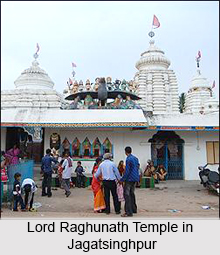 Jagatsinghpur is a town in Odisha located in Jagatsinghpur district. Paradip Port, Oil refinery and fertilizer factory are located in Jagatsinghpur district. Devi, Alaka, Biluakhai, Kusumi, Hansua, Kuanria and Lunijhara rivers belong to this district.
Jagatsinghpur is a town in Odisha located in Jagatsinghpur district. Paradip Port, Oil refinery and fertilizer factory are located in Jagatsinghpur district. Devi, Alaka, Biluakhai, Kusumi, Hansua, Kuanria and Lunijhara rivers belong to this district.
Formation of Jagatsinghpur
Jagatsinghpur is a town and a municipality in Odisha. It is also the headquarters of Jagatsinghpur district. It got the recognition as a new district on 1st April 1993. Before that, it was a part of the old Cuttack District which was divided into four new districts. It is surrounded by the districts of Kendrapara, Cuttack, Khorda, Puri and Bay of Bengal.
Location of Jagatsinghpur
Jagatsinghapur is at 20.27 degree north to 86.17 degree east. It has an average elevation of 15 metres (49 feet).
Tourism in Jagatsinghapur
Jagatsinghapur has the ancient temples like Sarala temple and many other tourism sites.
Jhankad is the sanctum sanctorum of Goddess Sarala, regarded as one of the most spiritually elevated expressions of Shaktism. Jhankad is believed as a synthesis of divine figure of Lord Durga and Lord Saraswati, the culture of Sarala is an amalgamation of three principal Hindu cults namely Vedic, Tantrik and Vaishnavite. It is one of the eight most famous Shakta shrines of Odisha. The main idol, carved out of stone is of eight-armed keeping her right feet on the lion in Mahinsha Mardini posture. Constructed by the legendary Bhauma Kings in the 8th Century, the place has a legendary association with sage Parshuram, the song of sage Yamadagni .Thus, this place is of high historical importance as a centre of Parshuram cult. Puran describes that Parshuram, the sixth incarnation of Lord Vishnu engraved the deity by his arrow and worshipped her for wisdom & power. It is also associated with the first epic poet of Odisha, Adikavi Sarala Dasa of 15th Century AD. Gorakhnath Temple is of among the famous Lord Shiva Shrines in Odisha. Thousands of devotees throng this temple every year especially on the occasion of Maha Shivaratri. Paradip is a major sea port of India for trade activities. The enchanting beauty of the sea, a wonderful sea beach & marine drive, beautiful creeks, estuaries and evergreen forests of estuarine islands of the river Mahanadi, make the place a major tourist attraction. Observing the movement of small marine crafts and the giant ore adds to the pleasure of the tourists. Gada Kujanga is famous for its presiding deity Kunja Behari. Garh Kujanga is also known as Subhadra Kshetra, The Raghunath Jew Matha located near the temple of Kunja Behari is an added attraction of this place.
Chandapur is in a typical rural atmosphere, the famous temple complex of Lord Raghunath Jew and Lord Chandrasekhar stands around 30 years back. One can find a rare combination of Sri Ram known as Raghunath Jew and Lord Shiva known as Chandrasekhar in a single compound. An old temple of Lord Chandrasekhar was destroyed by the effect of time and new temple complex was taken its place by adding various new temples. Now it becomes an important spot of Jagatsinghpur District.
Related Articles
Odisha
Temples of Odisha
Districts of Odisha
Bhubaneswar
Jagatsinghpur district



















